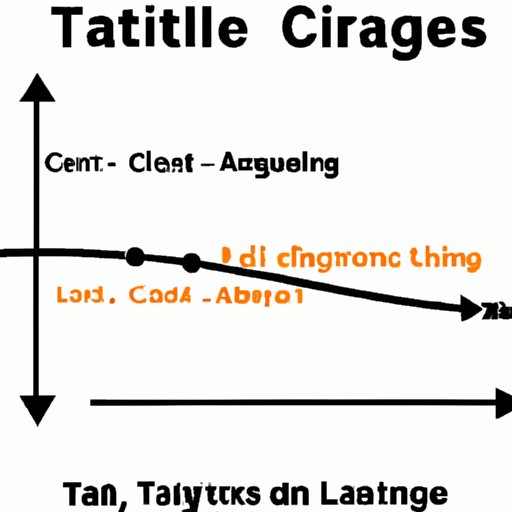
Introduction
Calculus, which is the branch of mathematics that deals with change, is a fundamental part of the field of mathematics and science. One of the most critical aspects of calculus is finding instantaneous rate of change. The instantaneous rate of change is a measure of how quickly a function is changing at a specific moment in time. In simpler terms, it is the slope of the tangent line to a curve at a particular point. This article will provide a comprehensive guide on how to find instantaneous rate of change.
Mastering the Basics: How to Calculate Instantaneous Rate of Change
Before delving deeper into the concept of instantaneous rate of change, it is vital to understand the basic terminologies involved in calculus. Calculus involves the use of mathematical concepts such as limits, derivatives, and integrals. The concept of limits is crucial in calculus, especially when calculating instantaneous rates of change. A limit is the value that a function approaches as the input (x) approaches a particular value.
The instantaneous rate of change is the measure of how fast a function is changing at a particular point in time. It is calculated by finding the slope of the tangent to the curve at that point. The difference between average rate of change and instantaneous rate of change is that the average rate of change is calculated over an interval, while the instantaneous rate of change is calculated at a single point.
Calculus 101: A Guide to Understanding Instantaneous Rate of Change
Calculus is a mathematical concept that has been studied and developed for more than three hundred years. It is a fundamental aspect of physics, economics, and engineering, among other fields. One of the most significant discoveries in calculus is the fundamental theorem of calculus. This theorem links the operation of differentiation, which is finding instantaneous rates of change, and integration, which is finding the area under a curve.
The tangent line is essential in the calculus concept, especially when finding instantaneous rate of change. The tangent line is a line that touches a curve at a particular point and has the same slope as the curve at that point. The instantaneous rate of change is calculated by finding the slope of the tangent line at that point.
The formula for finding instantaneous rate of change is derived by taking the derivative of a function. The derivative of a function is the rate of change of the function at any point. The derivative of a function is calculated by finding the limit of the slope of a line drawn from two points on the curve as the distance between the two points approaches zero.
Solving the Mystery: The Step-by-Step Process for Finding Instantaneous Rate of Change
Finding instantaneous rate of change can be challenging, especially for beginners. However, with proper guidance, it is a concept that can be understood easily. The first step in finding instantaneous rate of change is to determine the function that needs to be analyzed. Once the function is identified, finding the instantaneous rate of change involves the following steps:
1. Identify the point of interest: The point of interest is the point at which the instantaneous rate of change is to be calculated.
2. Find the derivative of the function: The derivative of the function gives the instantaneous rate of change at any point.
3. Plug in the point of interest: Plug in the x-value of the point of interest into the derivative of the function to find the slope of the tangent line at that point.
Breaking Down Calculus: A Beginner’s Guide to Finding Instantaneous Rate of Change
Calculus can be an intimidating concept, especially for beginners. However, breaking it down into simpler terms can make it easier to understand. The key to mastering calculus is to understand the basics and practice regularly. The step-by-step guide provided in this article can help in simplifying complex problems involving instantaneous rate of change.
Why Instantaneous Rate of Change Matters (and How to Find It)
Instantaneous rate of change is an essential concept in various fields, including physics, economics, and engineering. In physics, it helps in understanding motion and acceleration. In economics, it is used to analyze demand and supply curves. In engineering, it helps in designing machines and structures. Real-world examples of the importance of instantaneous rate of change include calculating the speed of an object at a particular point in time or the rate at which a population is growing.
Maximizing Your Calculus Potential: Tips for Calculating Instantaneous Rate of Change
To excel in calculus and find instantaneous rate of change, it is crucial to practice regularly and understand the basics. Some of the best practices for solving instantaneous rate of change problems include finding derivatives step by step, using graphing calculators to visualize the problem, and checking for common mistakes such as forgetting to use the chain rule. Memorizing the formulas and seeking additional resources and tools such as textbooks, online courses, and video tutorials can also help in mastering the concept of instantaneous rate of change.
Conclusion
Instantaneous rate of change is a critical concept in calculus, and it has numerous applications in different fields. Understanding how to calculate it is vital in analyzing motion, derivatives, and integration. With practice, anyone can master calculus and find instantaneous rate of change. Continual learning and seeking additional resources can help in mastering the concept and using it to solve real-world problems in different fields.




